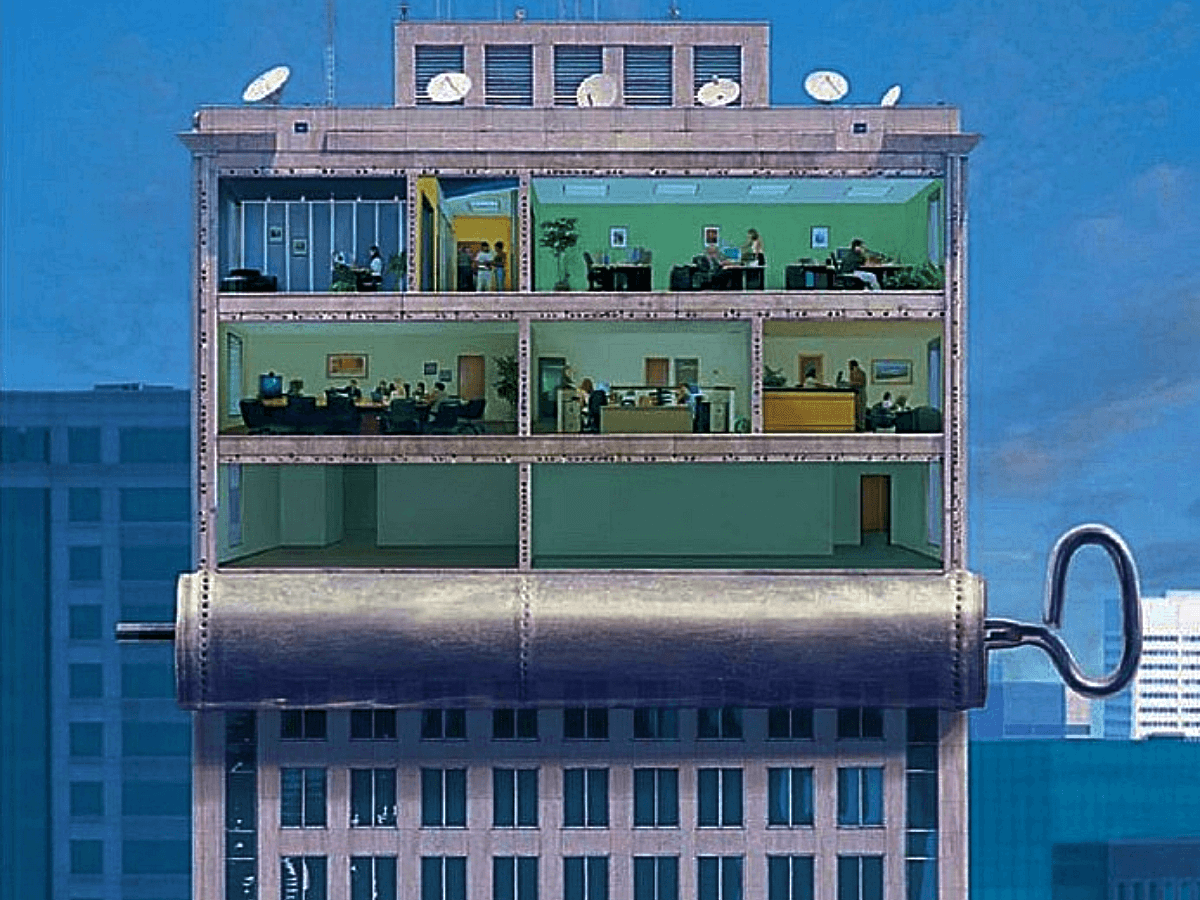Why do you pay rent for more space than you occupy?
Few commercial real estate concepts are misunderstood by tenants and even real estate professionals, as often as the measurement of office space square footage for rent purposes. The formula to determine the amount of rent in most office leases incorporates both the usable square footage, plus the tenant’s proportionate share of common areas in the building.
Useable Square Feet
In general, usable square footage is the amount of space you actually inhabit. For smaller tenants, useable square footage is simply the area of the demised space inside your office suite with no exclusions for recess entry/exit doors or structural columns. What that means in essence, is that the space is measured as if columns are not there. But restrooms and janitor closets, elevator lobbies, and public corridors are there, and you pay a portion of the space they occupy with the other tenants who use them.
For full-floor or multi-floor tenants, useable square footage is everything inside the glass line, including restrooms, janitor closets, or mechanical and electrical rooms. Like small tenants, full-floor or multi-floor tenants also must pay a share of the building’s common areas not on their floor, such as the main building lobby.
The Common Area Factor
A common area factor is a number that refers to shared spaces on a single floor and within a building in its entirety. These spaces as previously mentioned can be a pro-rata share of tenant common areas such as restrooms and elevator lobbies, or main building lobbies and amenities which all tenants of the building use.
The Floor Common Area Factor refers to tenant common areas on that floor only, and although the number varies from building to building, it is generally near eight percent of the floor for a factor of 1.08.
The Building Common Area Factor refers to common areas for all the tenants in the building and can range from six to eight percent. Common area factors determine the actual square footage for which a tenant will pay rent.
Typically when you are quoted a common area factor by the landlord or the building’s leasing agent it includes the sum of the floor common area factor and the building’s common area factor. As a result for most office buildings, the total common area factor ranges from 12 to 20% subject to the design of the building.
Rentable Square Feet
Simply stated, rentable square footage is the area of the enclosed interior space of the building other than holes in the floor, such as stairwells, elevators, and mechanical duct space. If it’s a floor that you can stand on, you pay for it, because it is rentable space. That includes restrooms, janitor closets, electrical and telephone rooms, etc. What you pay for then-your rent–is the rentable square footage times the lease rate per square foot.
To calculate rentable square footage for a smaller (less than full-floor) tenant, first, multiply the usable square footage by the floor common factor, then multiply that result by the building common factor.
Similarly, a full- or multi-floor tenant would multiply its full-floor usable by the building common factor because of the extra shared amenities and lobby space.
The Calculation
The formulas to determine the usf and the rsf are: rsf = usf x (1 + Add-on %)
Add-On % = (rentable sf / usable sf – 1)
For example: Assume you need 10,000 usf and there is a 15% add-on factor.
rsf = 10,000 x (1 + .15) = 11,500 rsf
For example: Assume you a leasing 16,000 rsf and have 14,000 usf.
Add-On % = (16,000 / 14,000) – 1 = 14.29%
In some real estate markets, a load or common area factor (CAF) is used instead of using an Add-On or Loss factor. Sometimes various landlords have differing definitions of these terms. It is a good practice to always clarify the calculation with the landlord or his agent to ensure there are no misunderstandings.
It is very important for a tenant to address this issue before a lease is signed, as there is usually little or no recourse after lease execution. Most leases do not detail a method of direct calculations of either usable or rentable square footage, and if a rentable figure is provided, it is almost always modified with the word “approximate.” However, most reasonable landlords will accept a revision to lease language that the measurement of the premises will be verified by either the tenant’s or landlord’s architect subject to an acceptable measurement standard such as the BOMA Standard or the commonly accepted standard for the market. Your tenant representative should verify that the common area factor represented by the landlord approaches reality.
Comparing Various Buildings
When you are out evaluating space options it is important to note that most buildings have different common area factors and floor plate dimensions or shapes can impact the space plan and the required amount of useable square footage. When comparing buildings, particularly from a financial aspect you should be using a cost per useable square foot (USF) metric, to be sure you are evaluating your options on an” apples to apples” basis.
Ultimately you are looking for the right space that not only fits your budget but also other real estate and workplace criteria. However, two buildings with the exact same face rental rate can have significantly different economic as a result of common area factors and space design efficiencies.
Working with a tenant representation specialist who understands all the intricacies of leasing office space and possesses the technical skills to evaluate various options will insure you are making an informed decision.





